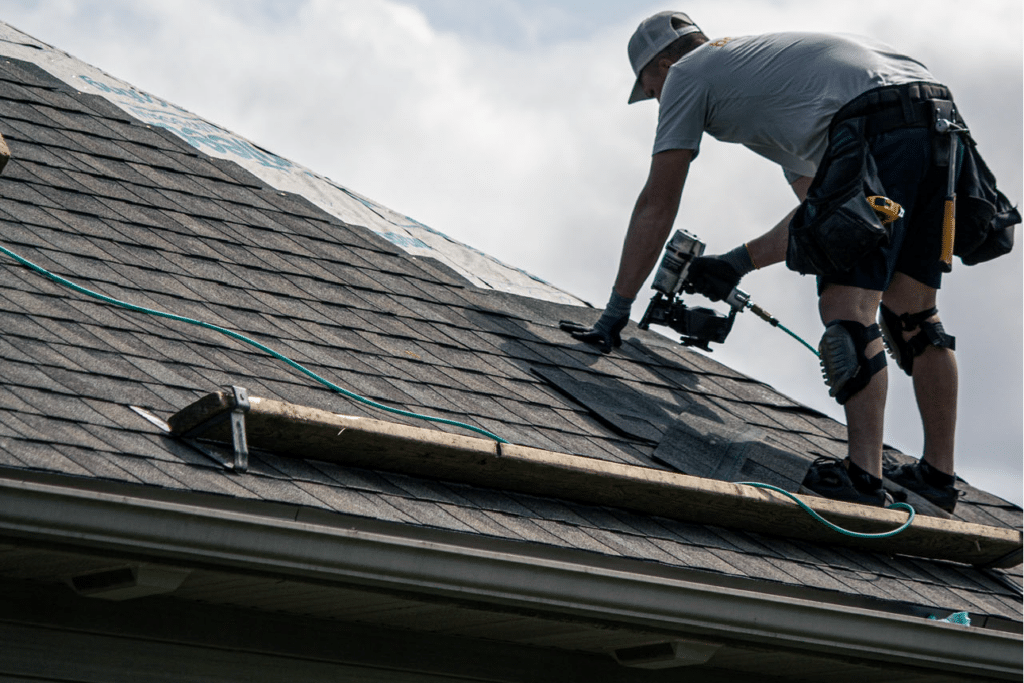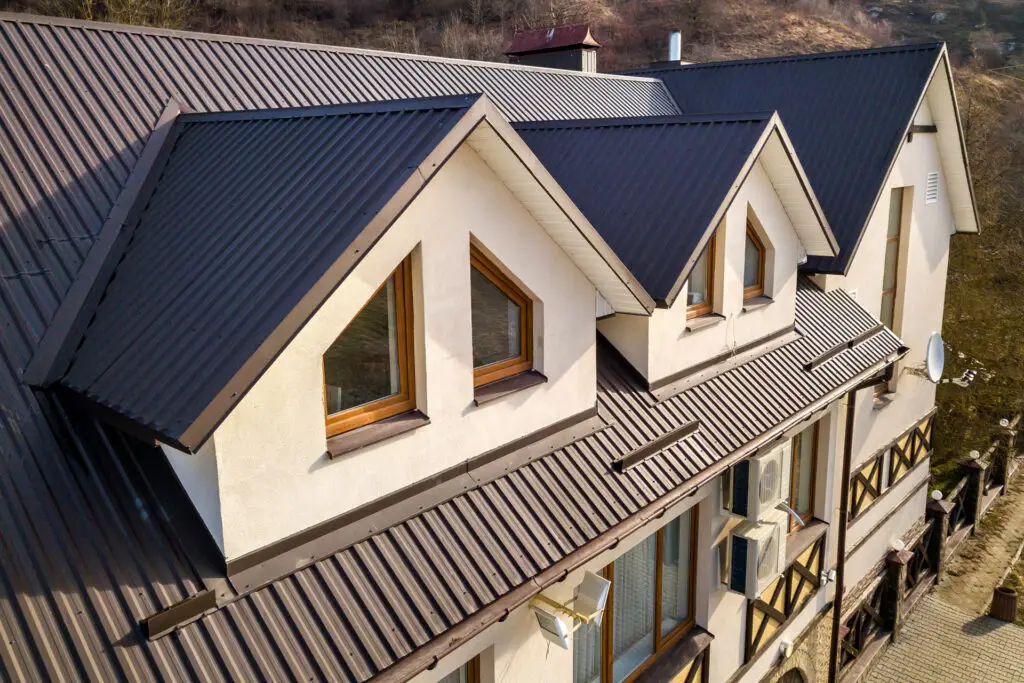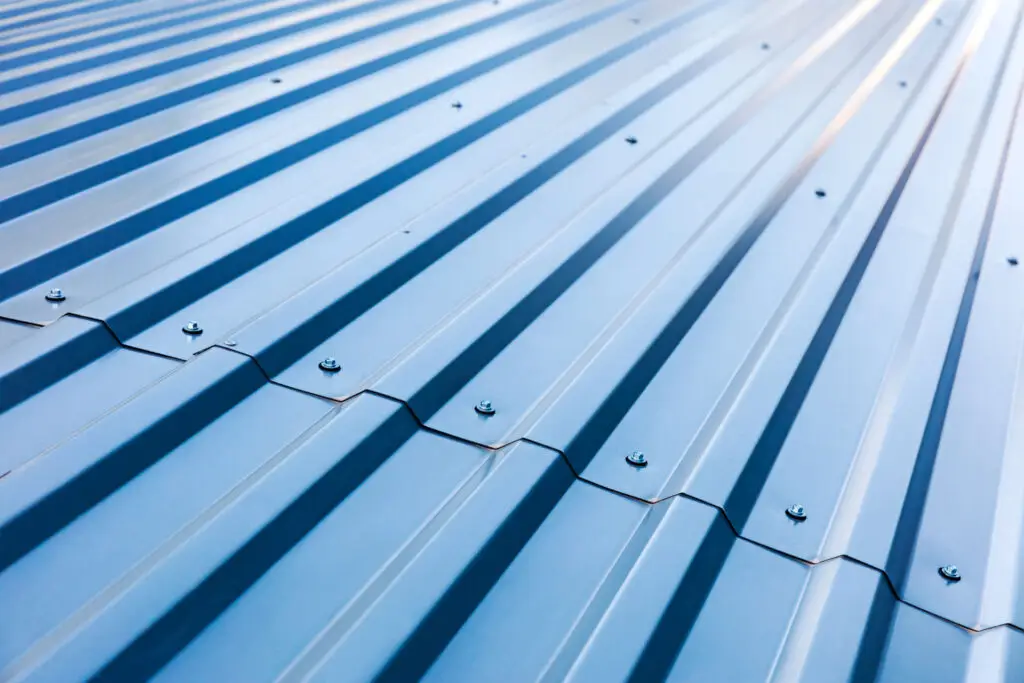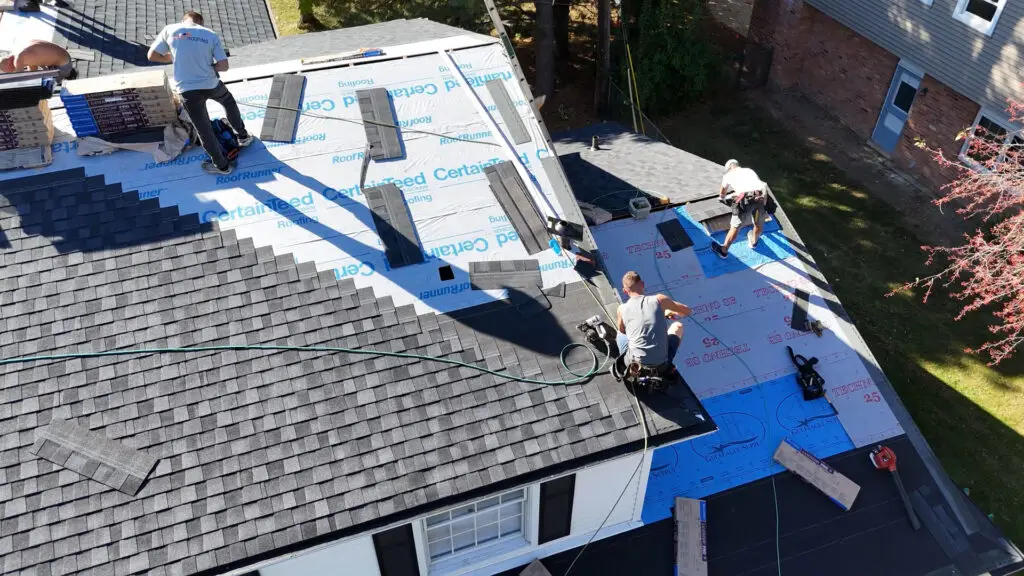Your roof does more than keep out the rain—it protects your home’s structure, insulation, energy efficiency, and overall value. But no roofing material lasts forever, and when signs of aging begin to appear, you’ll want to be prepared.
Homeowners often ask: how long does a roof last, especially in climates like Michigan where weather can take a toll year-round. The answer depends on several factors, including the material used, local climate, ventilation, and maintenance. In this guide, we’ll break down what affects your roof’s lifespan, how long different materials are expected to hold up, and when it’s time to think about roof replacement.
How Long Does a Roof Last: Determining Lifespan
No matter what kind of roofing material you have, a few key factors influence how long your roof will remain in good shape:
1. Material Quality
Not all shingles or panels are created equal. Higher-end materials tend to offer better weather resistance, UV protection, and durability over time.
2. Installation Workmanship
Even the best materials can fail prematurely if not installed properly. Poor flashing, incorrect nailing, or inadequate ventilation can shorten a roof’s lifespan by years.
3. Climate Conditions
Roofs in Michigan go through a lot. Freeze-thaw cycles, heavy snow, high winds, and hot summers all contribute to wear and tear. Regions with extreme weather often see shorter roof lifespans.
4. Ventilation and Insulation
Improper attic ventilation traps heat and moisture, which can lead to shingle warping, mold growth, or ice damming in winter.
5. Maintenance and Repairs
Regular inspections, cleaning your gutters, and addressing minor damage early can prevent larger issues and extend the life of your roof.
How Long Do Different Types of Roofs Last?
The material you choose plays a major role in how long your roof will protect your home.
Asphalt Shingles
Average lifespan: 15–30 years
Asphalt shingles are by far the most popular roofing material across the country, and for good reason. They offer an excellent balance of affordability, durability, and aesthetics. Standard 3-tab shingles tend to fall on the lower end of the lifespan spectrum, typically lasting 15–20 years. Architectural or dimensional shingles, which are thicker and more robust, often last 25 years or longer, especially with proper care and maintenance.
These shingles are designed to handle moderate weather, but in harsher climates like Michigan, heavy snow, ice, and wind can take their toll over time. Proper attic ventilation and annual inspections can help homeowners get the most life out of asphalt shingles.
Metal Roofing
Average lifespan: 40–70 years
Metal roofing is growing in popularity among homeowners looking for long-term value. Options like steel, aluminum, and standing seam panels offer exceptional durability and weather resistance. Metal roofs can withstand high winds, shed snow easily, and resist fire, making them an excellent choice for Michigan’s varied climate.
While they do come with a higher upfront cost, metal roofs require less maintenance and fewer repairs over the years. Coatings help prevent rust and fading, and their reflective properties can also help reduce energy costs by keeping your home cooler in the summer.
Wood Shakes or Shingles
Average lifespan: 20–40 years
Wood roofs, typically made from cedar or redwood, offer a natural and charming appearance. However, they do require more maintenance than other materials. Without regular cleaning and treatment, wood shakes can deteriorate faster due to moisture, moss, and insect damage.
In wet or shaded environments, such as wooded areas in Michigan, homeowners will need to stay vigilant. Regular cleaning, sealing, and replacing damaged shakes will help extend the life of the roof. Still, wood roofs may not be ideal in areas prone to wildfires or heavy rainfall.
Clay or Concrete Tile
Average lifespan: 50–100 years
Tile roofs are extremely durable and are most commonly seen in warmer climates. However, they are gaining popularity in northern states for their longevity and unique look. Concrete and clay tiles are heavy, so homes need to be properly engineered to support their weight.
While they are resistant to rot, pests, and fire, they are brittle. Falling branches or foot traffic can easily crack tiles, so repairs often involve replacing individual tiles as needed. That said, when properly installed and maintained, tile roofs can last a lifetime, making them one of the longest-lasting options available.
Slate Roofing
Average lifespan: 75–150 years
Slate is widely regarded as one of the most durable roofing materials available. Naturally resistant to moisture, fire, and pests, slate tiles can last over a century. They also offer a timeless, high-end appearance that appeals to many homeowners.
However, slate is also extremely heavy and requires a strong roof structure for support. Repairs can be challenging and should only be handled by professionals experienced with slate roofing. Though the upfront cost is substantial, slate offers unparalleled longevity that can make it a worthwhile investment for the right home.
Flat Roofing Systems (for porches, garages, or additions)
Average lifespan: 10–30 years
Flat roofs are commonly used on porches, garages, and modern home designs. Materials like TPO, EPDM rubber, and modified bitumen are popular choices. These systems generally have shorter lifespans than pitched roofs because they are more prone to water pooling and UV damage.
Regular maintenance is essential. Homeowners should ensure that drainage systems are functioning properly and that debris is regularly cleared from the surface. Annual inspections are highly recommended for flat roofs, as small punctures or membrane wear can lead to leaks if left unaddressed.

Signs That Your Roof May Be Nearing the End
Even before your roof reaches its expected lifespan, you might notice signs that it’s starting to wear out. These are all warning signs for homeowners wondering how long does a roof last—and whether it’s time to plan a replacement. It’s also important to consider how widespread the damage is. If you’re seeing isolated issues, repairs may be enough. But if signs of wear appear across multiple areas of the roof, or if you’re calling for frequent repairs every year, it’s a strong indicator that full replacement is approaching.
Watch for:
- Curled, cracked, or missing shingles
- Granules in your gutters or downspouts
- Dark streaks or algae growth
- Moss buildup along the roofline
- Sagging areas or soft spots
- Persistent leaks or water stains inside your home
- Daylight is visible through the attic
If your roof is over 15 years old and showing one or more of these signs, it may be reaching the end of its service life.
How Long Does a Roof Last in Michigan?
While national averages are a helpful guide, climate plays a big role in roof aging. Michigan’s four-season climate puts roofs through constant expansion and contraction.
- Winter: Snow and ice can lead to ice dams and moisture intrusion
- Spring: Freeze-thaw cycles stress shingles and flashing
- Summer: UV rays can dry out and fade materials
- Fall: Leaves and debris clog gutters, causing water backup
Due to these conditions, roofs in Michigan may have slightly shorter lifespans than in more temperate regions. For example, a 25-year asphalt shingle roof might realistically last 18–22 years in Michigan.
Is Roof Replacement Always Necessary?
Not every sign of aging means you need a brand-new roof right away. Small repairs, like replacing a few shingles or sealing a flashing joint, can help extend the life of your current roof.
But when you’re dealing with widespread damage, repeat leaks, or aging materials across the entire roof surface, replacement may be more cost-effective than ongoing patchwork.
If you’re unsure, a professional roofing inspection can help clarify your options. At BCM Roofing, we give honest recommendations based on your roof’s current condition, not just its age. Professional assessments don’t just determine whether you need a new roof—they also help you plan for it. Roofing experts can advise on whether your current roof can safely buy you another season or two with repairs, or if scheduling replacement soon will help avoid escalating repair costs. Getting ahead of replacement is always better than dealing with emergency leaks or storm damage.
How to Extend Your Roof’s Lifespan
Here are some proactive steps you can take to help your roof last as long as possible:
- Have your roof inspected annually, especially after winter or a big storm
- Clean gutters regularly to prevent water from pooling near the roof edges
- Remove moss and algae growth before it causes material breakdown
- Trim trees that hang over your roof and drop debris
- Ensure proper attic ventilation to prevent moisture buildup
- Make minor repairs early before they become bigger problems
Planning for Replacement: What to Expect
If your roof is getting close to the end of its lifespan, planning ahead can help reduce stress, especially if you’re budgeting or trying to time the replacement with other exterior work.
What to consider:
- Timing: Spring through fall offers the best weather for roofing in Michigan
- Material selection: We’ll walk you through options that fit your home and budget
- Financing: Many homeowners use financing to spread the cost of a roof replacement over time
- Permits: BCM Roofing handles all permitting and inspection requirements for you
- Cleanup: We ensure your yard and property are protected and fully cleaned after the job
- Disposal: A professional roofing contractor will also handle the disposal of your old roofing materials
So, How Long Does a Roof Last?
So, how long does a roof last? While there’s no one-size-fits-all answer, but with the right materials and maintenance, most roofs provide at least 20–30 years of protection. If you’re asking yourself ‘how long does a roof last?’ and starting to see signs of wear, it’s probably time to schedule an inspection.
At BCM Roofing, we specialize in helping Michigan homeowners protect their investments. Whether you need repairs, an inspection, or a full roof replacement, we’ll help you make the right decision for your home.
Contact us today for a free estimate or to schedule a roof evaluation.
How Long Does a Roof Last With Regular Maintenance?
If your roof is regularly inspected, gutters are kept clean, and small issues are fixed early, you can significantly extend its service life. But even with care, homeowners should still ask themselves every few years: ‘how long does a roof last in these conditions?’, and ‘is my home prepared for replacement when the time comes?’
FAQs About Roof Lifespan
How long does a roof last in Michigan on average?
Typically between 18 and 25 years, depending on shingle quality, ventilation, and weather exposure.
Can I just replace part of my roof?
Sometimes, yes. If the damage is isolated and the rest of the roof is in good condition, partial repair can be a good solution.
What’s the longest-lasting roofing material?
Slate roofs can last 100 years or more, but they’re also one of the most expensive options.
Is it better to repair or replace a roof?
That depends on the age of the roof and the extent of the damage. An inspection will help you decide what’s most cost-effective.
Does a new roof add value to my home?
Yes, it improves curb appeal, energy efficiency, and resale value—and gives potential buyers peace of mind.
How can I make my roof last longer?
Routine maintenance is key. Schedule annual inspections, clean gutters regularly, trim trees to prevent debris buildup, and make minor repairs as soon as issues arise. These small steps can add years to your roof’s lifespan.
Is roof replacement covered by homeowners’ insurance?
It depends. If damage is sudden and caused by a covered peril like hail, wind, or falling debris, replacement may be partially or fully covered. However, general wear and tear or aging are typically considered the homeowner’s responsibility.
How Long Does a Roof Last Compared to Homeownership?
Many homeowners wonder whether their roof will outlast their time in the home. On average, Americans move every 13 years—but if your roof lasts 25 or more, it may only need replacement once in your lifetime. Knowing how long a roof lasts helps you plan major upgrades, budget wisely, and better time your home’s resale.


